 by our College Data Analytics Team
by our College Data Analytics TeamDine College total enrollment is approximately 1,369 students.
Male/Female Breakdown of Undergraduates
The full-time Dine College undergraduate population is made up of 72% women, and 28% men.
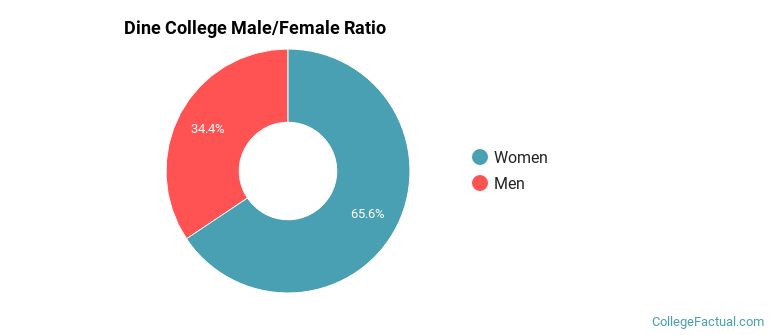
For the gender breakdown for all students, go here.
Dine College Racial/Ethnic Breakdown of Undergraduates
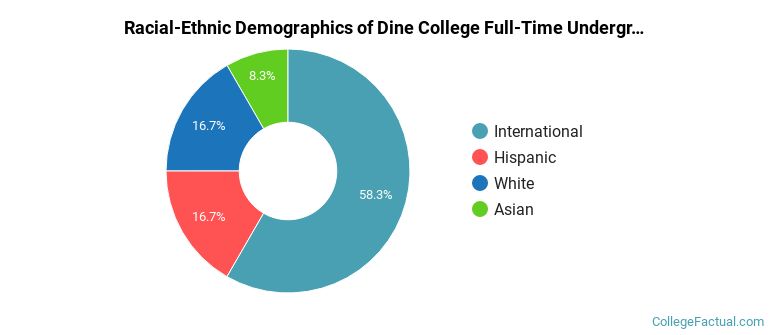
| Race/Ethnicity | Number |
|---|---|
| International | 5 |
| Hispanic | 2 |
| White | 2 |
| Black or African American | 1 |
| Asian | 0 |
| Native Hawaiian or Pacific Islander | 0 |
| Multi-Ethnic | 0 |
| Unknown | 0 |
See racial/ethnic breakdown for all students.
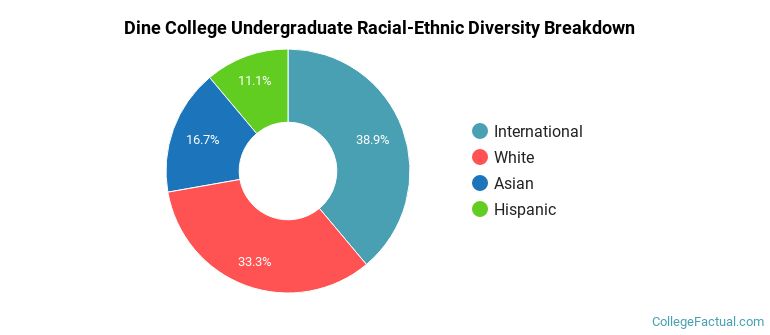
| Race/Ethnicity | Number |
|---|---|
| White | 16 |
| Hispanic | 7 |
| International | 5 |
| Black or African American | 1 |
| Multi-Ethnic | 1 |
| Asian | 0 |
| Native Hawaiian or Pacific Islander | 0 |
| Unknown | 0 |

There are approximately 988 female students and 381 male students at Dine College.
Dine College ranks 1,430 out of 2,183 when it comes to geographic diversity.
21.01% of Dine College students come from out of state, and 0% come from out of the country.
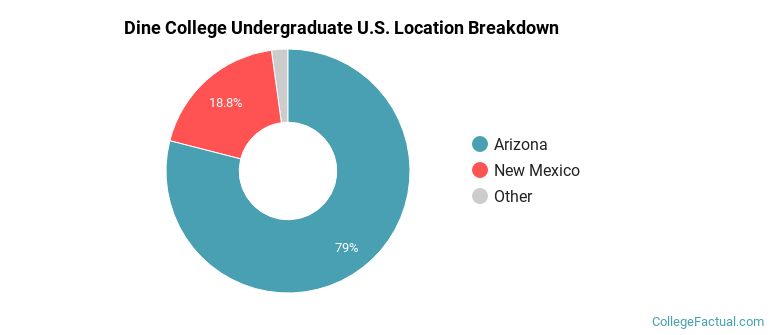
The undergraduate student body is split among 5 states (may include Washington D.C.). Click on the map for more detail.
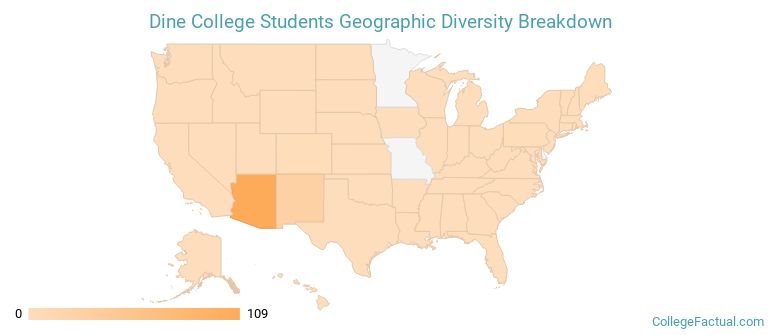
| State | Amount |
|---|---|
| Arizona | 109 |
| New Mexico | 26 |
| Colorado | 1 |
| Maine | 1 |
| Pennsylvania | 1 |
Students from 3 countries are represented at this school, with the majority of the international students coming from Kenya, Philippines, and Haiti.
Learn more about international students at Dine College.
A traditional college student is defined as being between the ages of 18-21. At Dine College, 34.74% of students fall into that category, compared to the national average of 60%.
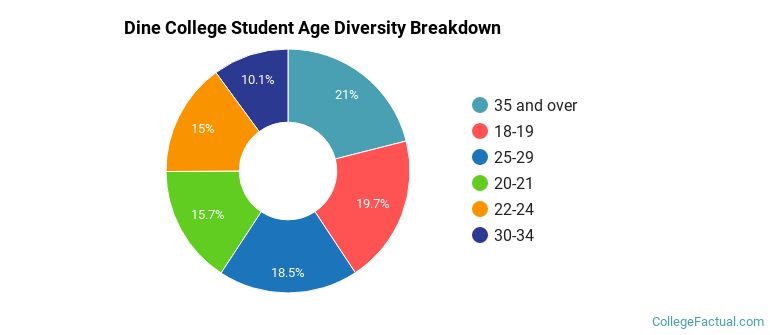
| Student Age Group | Amount |
|---|---|
| 35 and over | 303 |
| 18-19 | 283 |
| 25-29 | 267 |
| 20-21 | 226 |
| 22-24 | 216 |
| 30-34 | 145 |
| Under 18 | 0 |
Footnotes
*The racial-ethnic minorities count is calculated by taking the total number of students and subtracting white students, international students, and students whose race/ethnicity was unknown. This number is then divided by the total number of students at the school to obtain the racial-ethnic minorities percentage.
References
Department of Homeland Security Citizenship and Immigration Services
Read College Factual's Diversity Ranking Methodology.